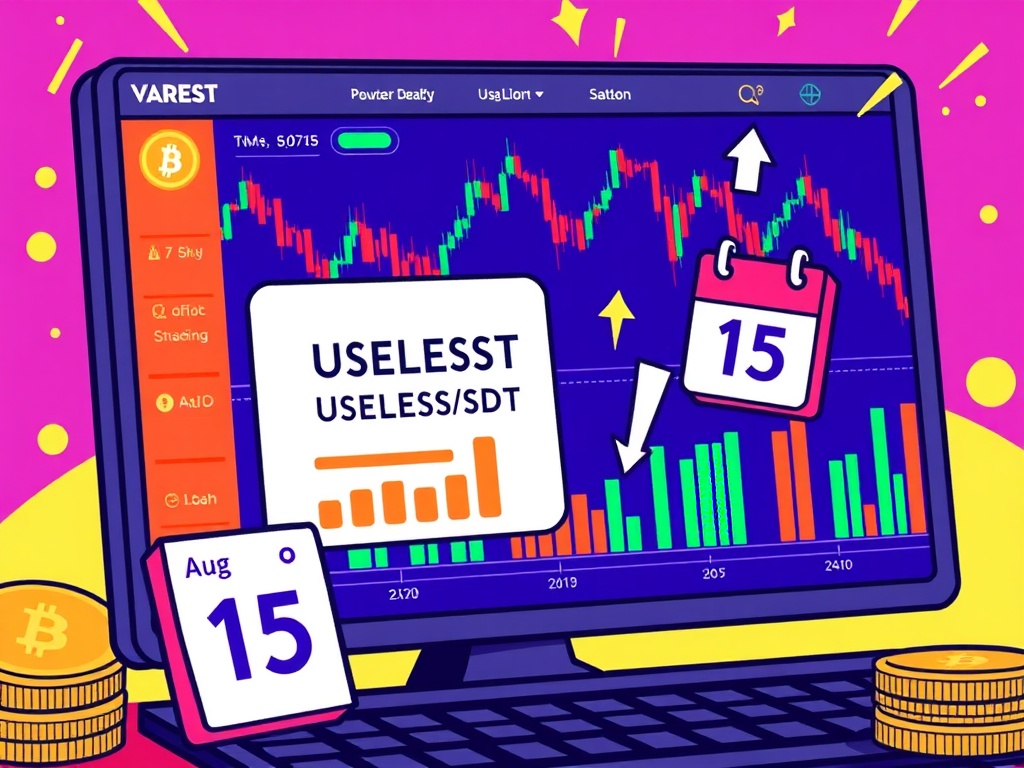BitcoinWorld

Bitcoin ETFs: Astounding $226.66M Inflow Marks a Powerful Rebound
The world of cryptocurrency is often characterized by its rapid shifts and dynamic movements, and July 24th delivered a truly exciting development. After enduring a challenging four-day streak of net outflows, U.S. spot Bitcoin ETFs have made an astounding comeback, recording a robust total net inflow of $226.66 million. This significant turnaround has ignited fresh optimism across the digital asset landscape, signaling a potential shift in investor sentiment and highlighting the enduring appeal of Bitcoin as a foundational asset in the evolving financial ecosystem. For anyone tracking the pulse of the crypto market, this resurgence in Bitcoin ETFs is a compelling story of resilience and renewed confidence.
Understanding the Power of Spot Bitcoin ETFs
Before diving deeper into the recent inflows, it is essential to grasp what spot Bitcoin ETFs are and why they hold such immense importance in the financial world. A spot Bitcoin ETF is an exchange-traded fund that directly holds Bitcoin. This means that when you invest in such an ETF, you are indirectly gaining exposure to the actual price movements of Bitcoin without having to directly buy, store, or secure the cryptocurrency yourself. This structure offers several compelling advantages:
- Accessibility: Spot Bitcoin ETFs allow traditional investors to gain exposure to Bitcoin through regulated brokerage accounts, simplifying the investment process significantly. This removes the complexities often associated with cryptocurrency exchanges and digital wallets.
- Regulatory Clarity: Operating within a regulated framework, these ETFs provide a layer of investor protection and oversight that might be perceived as lacking in direct crypto investments. This regulatory stamp of approval can attract institutional investors and more conservative retail investors.
- Liquidity: Traded on major stock exchanges, these ETFs offer high liquidity, making it easier for investors to buy and sell shares throughout the trading day.
- Diversification (Indirect): For traditional portfolios, adding exposure to Bitcoin via an ETF can offer diversification benefits, as Bitcoin’s price movements can sometimes be uncorrelated with traditional assets.
The introduction and subsequent performance of these funds have been closely watched, as they represent a crucial bridge between conventional finance and the burgeoning digital asset space. Their ability to attract significant capital flows is a strong indicator of broader market acceptance and institutional interest in Bitcoin.
The July 24th Resurgence: A Closer Look at Bitcoin ETFs Performance
The data for July 24th, meticulously tracked and shared by Trader T on X, paints a vivid picture of this remarkable recovery. The total net inflow of $226.66 million not only snapped a four-day outflow streak but also demonstrated a strong appetite for Bitcoin exposure among investors. This influx of capital suggests a renewed bullish sentiment, or at least a pause in the previous trend of profit-taking or risk-aversion.
Let’s break down which funds led this impressive charge, showcasing the diverse range of players actively participating in the Bitcoin ETFs market:
| ETF Ticker | Issuer | Net Inflows (Millions USD) |
|---|---|---|
| FBTC | Fidelity | $106.58 |
| HODL | VanEck | $46.36 |
| IBIT | BlackRock | $32.53 |
| BITB | Bitwise | $29.83 |
| BTC | Grayscale (mini) | $7.91 |
| EZBC | Franklin Templeton | $3.45 |
Fidelity’s FBTC led the pack by a significant margin, pulling in over $100 million, underscoring its growing prominence in the spot Bitcoin ETFs arena. VanEck’s HODL also demonstrated strong performance, securing the second spot. Even BlackRock’s IBIT, a powerhouse in the ETF space, contributed substantially to the positive figures. The participation of multiple issuers, each attracting notable inflows, highlights the broad-based interest in these investment vehicles.
Decoding the Significance: Why Inflows are Crucial for Bitcoin ETFs and the Broader Market
The return to net inflows for Bitcoin ETFs is more than just a daily statistic; it carries profound implications for the entire cryptocurrency market. Here’s why this trend is so crucial:
- Validation of Institutional Interest: Sustained inflows demonstrate that institutional investors, financial advisors, and even large retail investors are increasingly comfortable allocating capital to Bitcoin through regulated products. This validates Bitcoin as a legitimate asset class.
- Impact on Bitcoin’s Price: While not a direct causation, consistent inflows into spot Bitcoin ETFs can create buying pressure on the underlying asset. As ETFs acquire more Bitcoin to back their shares, it can reduce the available supply on exchanges, potentially contributing to price appreciation.
- Market Sentiment Indicator: ETF flows often serve as a barometer for market sentiment. A shift from outflows to inflows suggests a turning point, potentially indicating that investors are shaking off recent bearish trends and are ready to re-engage with the asset.
- Increased Liquidity and Maturity: The growth of the ETF market adds significant liquidity to the Bitcoin ecosystem. This increased liquidity can lead to more stable price discovery and a more mature market overall, reducing volatility over the long term.
This positive momentum could attract even more capital, creating a virtuous cycle where increased interest leads to greater adoption and further market maturation. It suggests that the initial excitement around the launch of these Bitcoin ETFs is not merely a fleeting phenomenon but a foundational shift in how investors access digital assets.
Navigating the Landscape: Benefits and Challenges of Investing in Bitcoin ETFs
While the recent inflows paint a promising picture, it is important for investors to understand both the advantages and potential drawbacks of including Bitcoin ETFs in their portfolios. Balancing these aspects is key to making informed investment decisions.
Benefits:
- Ease of Investment: As mentioned, these ETFs simplify Bitcoin exposure, removing the technical hurdles of self-custody or navigating complex crypto exchanges. This makes them ideal for traditional investors.
- Regulatory Oversight: Operating under the purview of financial regulators like the SEC in the U.S. provides a level of scrutiny and investor protection not always present in direct crypto investments.
- Portfolio Diversification: For those seeking to diversify beyond traditional stocks and bonds, Bitcoin can offer a unique risk-reward profile. ETFs provide a convenient way to add this exposure.
- Tax Efficiency: In some jurisdictions, holding an ETF might offer different tax implications compared to holding Bitcoin directly, potentially simplifying tax reporting for investors.
Challenges:
- Market Volatility: Bitcoin is known for its price volatility, and Bitcoin ETFs will naturally reflect this. Investors must be prepared for significant price swings.
- Management Fees: ETFs come with expense ratios (management fees) that can eat into returns over time. While generally lower than actively managed funds, they are still a consideration.
- No Direct Ownership: While you gain exposure to Bitcoin’s price, you do not directly own the underlying asset. This means you cannot use it for transactions, staking, or other decentralized finance (DeFi) activities.
- Regulatory Risks: While current regulations provide clarity, future regulatory changes could impact the operations or viability of Bitcoin ETFs.
- Competition: The market for spot Bitcoin ETFs is becoming increasingly competitive, which could lead to fee wars or consolidation among providers.
Understanding these facets allows investors to weigh the convenience and regulatory benefits against the inherent risks of the underlying asset and the structure of the investment vehicle itself.
The Broader Market Context: What Else is Influencing Bitcoin ETFs?
The recent inflows into Bitcoin ETFs don’t occur in a vacuum. They are often influenced by a confluence of macroeconomic factors, specific crypto market developments, and evolving investor perceptions. Several elements could be contributing to this renewed interest:
- Macroeconomic Climate: Global economic indicators, inflation trends, interest rate policies, and geopolitical stability can all influence investor appetite for risk assets like Bitcoin. A perception of traditional market uncertainty might drive some investors towards alternative stores of value.
- Bitcoin Halving Event: While the most recent Bitcoin halving occurred in April 2024, its long-term effects on supply scarcity and price appreciation are still anticipated by many. This fundamental event often creates a bullish narrative for Bitcoin.
- Technological Advancements: Continuous development within the Bitcoin ecosystem, such as improvements in scalability or security, can bolster confidence in the asset’s long-term viability.
- Increasing Adoption: Growing mainstream adoption of cryptocurrencies, whether through payment integrations or corporate treasury holdings, can positively influence investor sentiment towards Bitcoin ETFs.
These interconnected factors collectively shape the narrative around Bitcoin and its investment products, making the recent inflow a multi-faceted signal rather than an isolated event.
Looking Ahead: What Does This Mean for Bitcoin ETFs and Crypto?
The $226.66 million net inflow on July 24th is a powerful indicator that the market’s interest in Bitcoin ETFs remains robust. While one day’s data does not define a long-term trend, it certainly provides a strong counter-narrative to the recent period of outflows. This rebound suggests that underlying demand for Bitcoin exposure, particularly through regulated and accessible channels, is resilient.
Moving forward, market participants will be closely watching for sustained inflows, which would further solidify the position of Bitcoin ETFs as a significant force in capital allocation. Continued positive momentum could encourage more institutional players to enter the space, potentially leading to even greater liquidity and market depth. This development underscores Bitcoin’s journey from a niche digital asset to a recognized component of mainstream investment portfolios.
Summary
The U.S. spot Bitcoin ETFs have delivered an impressive performance on July 24th, reversing a four-day outflow streak with a substantial $226.66 million in net inflows. This significant turnaround, led by Fidelity’s FBTC, VanEck’s HODL, and BlackRock’s IBIT, signals renewed investor confidence and highlights the increasing institutional embrace of Bitcoin. These ETFs continue to serve as a crucial gateway for traditional investors seeking exposure to the digital asset market, offering accessibility and regulatory clarity. While challenges like volatility persist, the recent surge in inflows underscores the growing maturity and enduring appeal of Bitcoin as a valuable asset in the global financial landscape. This positive shift is a compelling testament to the evolving narrative of cryptocurrency in mainstream finance.
Frequently Asked Questions (FAQs)
Q1: What is a spot Bitcoin ETF?
A spot Bitcoin ETF is an exchange-traded fund that directly holds actual Bitcoin. It allows investors to gain exposure to Bitcoin’s price movements without the need to directly purchase, store, or manage the cryptocurrency themselves, trading like a regular stock on traditional exchanges.
Q2: Why are spot Bitcoin ETFs important for the crypto market?
Spot Bitcoin ETFs are crucial because they bridge the gap between traditional finance and cryptocurrency. They offer regulatory clarity, ease of access for institutional and retail investors, and can attract significant capital, contributing to Bitcoin’s liquidity and mainstream adoption.
Q3: Which ETFs saw the most inflows on July 24?
On July 24, Fidelity’s FBTC led with $106.58 million in net inflows, followed by VanEck’s HODL ($46.36 million), BlackRock’s IBIT ($32.53 million), Bitwise’s BITB ($29.83 million), Grayscale’s mini BTC ($7.91 million), and Franklin’s EZBC ($3.45 million).
Q4: How do net inflows impact Bitcoin’s price?
Net inflows into Bitcoin ETFs typically mean that the ETF issuers are buying more Bitcoin on the open market to back their shares. This increased demand can reduce the available supply of Bitcoin, potentially leading to upward pressure on its price.
Q5: Are Bitcoin ETFs suitable for all investors?
While Bitcoin ETFs offer simplified access, they are still subject to Bitcoin’s inherent price volatility. They are generally suitable for investors who understand the risks associated with cryptocurrency and are comfortable with potential significant price fluctuations, aligning with their overall investment goals and risk tolerance.
Q6: What factors could influence future Bitcoin ETF flows?
Future Bitcoin ETF flows could be influenced by a range of factors including global macroeconomic conditions, interest rate decisions by central banks, significant regulatory developments, Bitcoin’s own price performance, and broader market sentiment within the cryptocurrency space.
If you found this comprehensive analysis of the recent Bitcoin ETFs inflows insightful, consider sharing it with your network! Your support helps us continue to deliver timely and in-depth cryptocurrency market updates. Spread the word on social media and let others know about this exciting development in the digital asset space.
To learn more about the latest crypto market trends, explore our article on key developments shaping Bitcoin institutional adoption.
This post Bitcoin ETFs: Astounding $226.66M Inflow Marks a Powerful Rebound first appeared on BitcoinWorld and is written by Editorial Team





